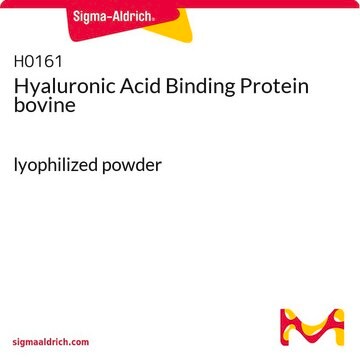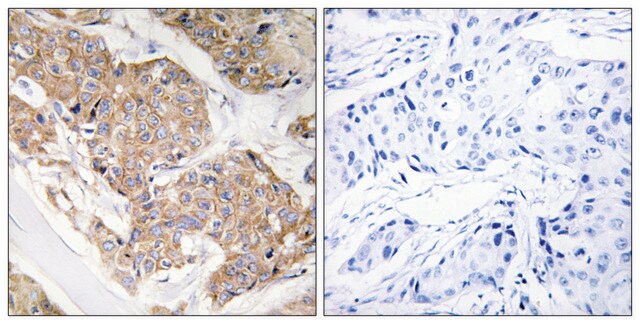MABF3137
Anti-MXRA8 Antibody, clone 9E9
Sinónimos:
Dual Ig domain-containing cell adhesion molecule, Limitrin, Matrix remodeling-associated protein 8
About This Item
Productos recomendados
origen biológico
mouse
Nivel de calidad
forma del anticuerpo
purified antibody
tipo de anticuerpo
primary antibodies
clon
9E9, monoclonal
mol peso
calculated mol wt 49.13 kDa
purificado por
using protein G
reactividad de especies
human
reactividad de especies (predicha por homología)
mouse
envase
antibody small pack of 100
técnicas
flow cytometry: suitable
inhibition assay: suitable
western blot: suitable
isotipo
IgG1κ
secuencia del epítopo
N-terminal
Nº de acceso Protein ID
Nº de acceso UniProt
temp. de almacenamiento
-10 to -25°C
Información sobre el gen
human ... MXRA8(54587)
Especificidad
Inmunógeno
Aplicación
Evaluated by Flow Cytometry in THP-1 cells.
Flow Cytometry Analysis: 1.0 µg of this antibody detected MXRA8 in one million THP-1 cells.
Tested Applications
Inhibition Assay: A representative lot block MXRA8 activity and reduced TH17 cell trafficking across the blood brain barrier. (Charabati, M., et al. (2022). Sci Transl Med. 14(626): eabj0473).
Flow Cytometry Analysis: A representative lot detected MXRA8 in Flow Cytometry applications (Charabati, M., et al. (2022). Sci Transl Med.14(626): eabj0473).
Western Blotting Analysis: A representative lot detected MXRA8 in Western Blotting applications (Charabati, M., et al. (2022). Sci Transl Med. 14(626): eabj0473).
Note: Actual optimal working dilutions must be determined by end user as specimens, and experimental conditions may vary with the end user.
Descripción de destino
Forma física
Reconstitución
Almacenamiento y estabilidad
Otras notas
Cláusula de descargo de responsabilidad
Not finding the right product?
Try our Herramienta de selección de productos.
Código de clase de almacenamiento
12 - Non Combustible Liquids
Clase de riesgo para el agua (WGK)
WGK 2
Punto de inflamabilidad (°F)
Not applicable
Punto de inflamabilidad (°C)
Not applicable
Certificados de análisis (COA)
Busque Certificados de análisis (COA) introduciendo el número de lote del producto. Los números de lote se encuentran en la etiqueta del producto después de las palabras «Lot» o «Batch»
¿Ya tiene este producto?
Encuentre la documentación para los productos que ha comprado recientemente en la Biblioteca de documentos.
Nuestro equipo de científicos tiene experiencia en todas las áreas de investigación: Ciencias de la vida, Ciencia de los materiales, Síntesis química, Cromatografía, Analítica y muchas otras.
Póngase en contacto con el Servicio técnico








